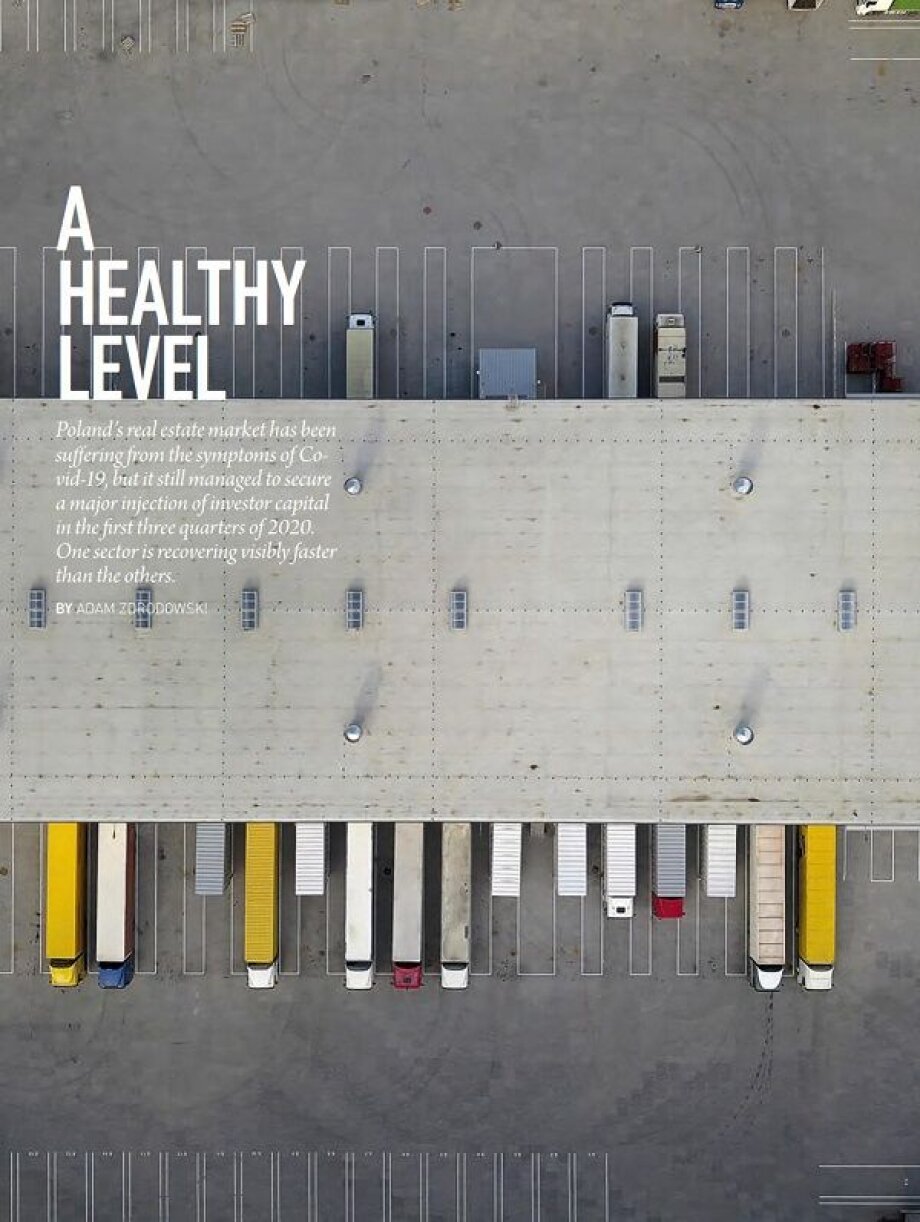The Polish commercial real estate market has been seeing a drop in investment transactions this year, but the downturn seems to be milder than one might have expected considering the scale of the coronavirus pandemic and the restrictions related to it. Volumes recorded in the Q1-Q3 period show that investors are adapting to the current situation focusing on assets that have proved more resilient to the crisis. The general outlook for the next few months is rather positive.
A total of slightly over €4 billion was transacted in the Polish commercial property sectors in the first three quarters of 2020, according to Cushman & Wakefield data. This marks a 12.4-percent decrease on the same period of 2019 when the figure stood at nearly €4.6 billion. The industrial sector has attracted the most investor interest so far this year accounting for 48 percent of the Q1-Q3 volume. The office and retail sectors accounted for 38 percent and 14 percent of the volume respectively.
LOSERS AND WINNERS
The last three quarters brought a lot of uncertainty with the ongoing slowdown not resembling the crises witnessed in the 2000s, pointed out Michał Stępień, an associate in the investment department of Savills. Restrictions hit a market that was heated up and awash with capital, he noted. While the first half of the year saw the finalization of a number of deals initiated before the outbreak of the pandemic, the result recorded in Q3 (over €1 billion) already reflected the lockdown-dampened sentiments and subdued investor activity.
The particular commercial property sectors have been affected to a varying degree. The retail sector has suffered the most – the fact that many shopping center stores remained closed for much of the year has basically reduced investors’ interest in malls to the minimum. Convenience shopping centers may be an exception, but those account for a tiny portion of the investment pie. In Stępień’s opinion, there are currently no signs that investors will step up their activity in the retail sector in the coming months.
Offices have fared better and investors’ activity in the sector has remained at a relatively high level (even if buyers have visibly become more choosy) despite the still unanswered questions about when a return to office work will take place and what the demand for office space will look like in the next few quarters. Data from the office space leasing market will be crucial for investors’ interest in office assets in the coming months, especially in the context of a large amount of new space under construction, Stępień argued.
The industrial sector has, without any doubt, been most successful at adapting to the current situation with the negative impact of the pandemic on the economy at large having here been largely offset by the accelerated growth of the e-commerce market. Many investors now see warehouses as a first-choice asset class – suffice it to say that the sector’s share in the total transaction volume increased to around 70 percent in Q3. Interestingly, some alternative asset classes including data centers and solar farms have also been drawing more investor attention.
WEAKER, BUT SOLID
As WBJ went to press it was still too early to predict exactly how the year could end for the investment market with Q4 usually being very important for the market’s overall annual performance. However, according to Savills, in an optimistic scenario, one can expect the total 2020 volume to be close to €6 billion. Cushman & Wakefield experts forecast that the figure will stand at between €5.2 billion and €5.5 billion. This would be approximately 30 percent below the 2019 level, but still well above the five-year average.
What is clear is that the industrial sector will continue to perform well despite – or actually partly because of – the pandemic in the months to come. The combined value of investment transactions in that sector will exceed – for the first time in history – €2 billion this year. The office sector will also likely keep seeing a healthy level of investor interest. Several big office deals valued at a total of more than €700 million are now being negotiated and are expected to close in the first half of 2021, Cushman & Wakefield has revealed.
A recent report by Savills IM, an international real estate investment manager, points to investors’ confidence about 2021 with almost 60 percent of them globally expecting Europe’s property markets to recover next year. According to the study, mid-to-long-term prospects for Poland’s commercial property market remain positive with attractive assets worth looking at in the country including modern distribution centers along the main corridors, selected office facilities in Warsaw and key regional cities, outlet centers, and food-anchored retail parks.

















